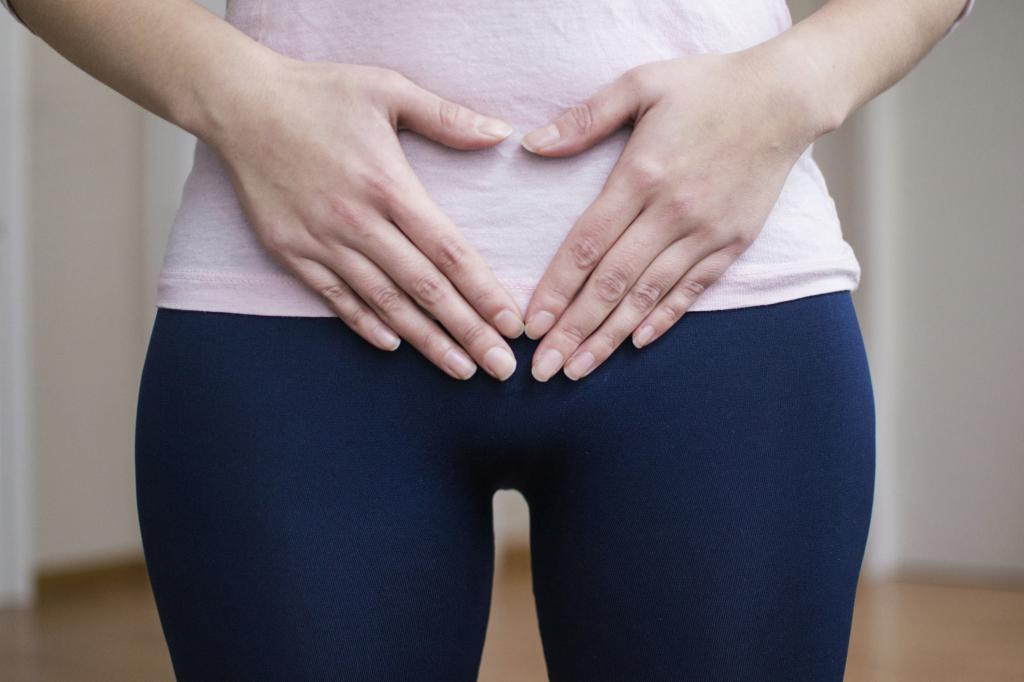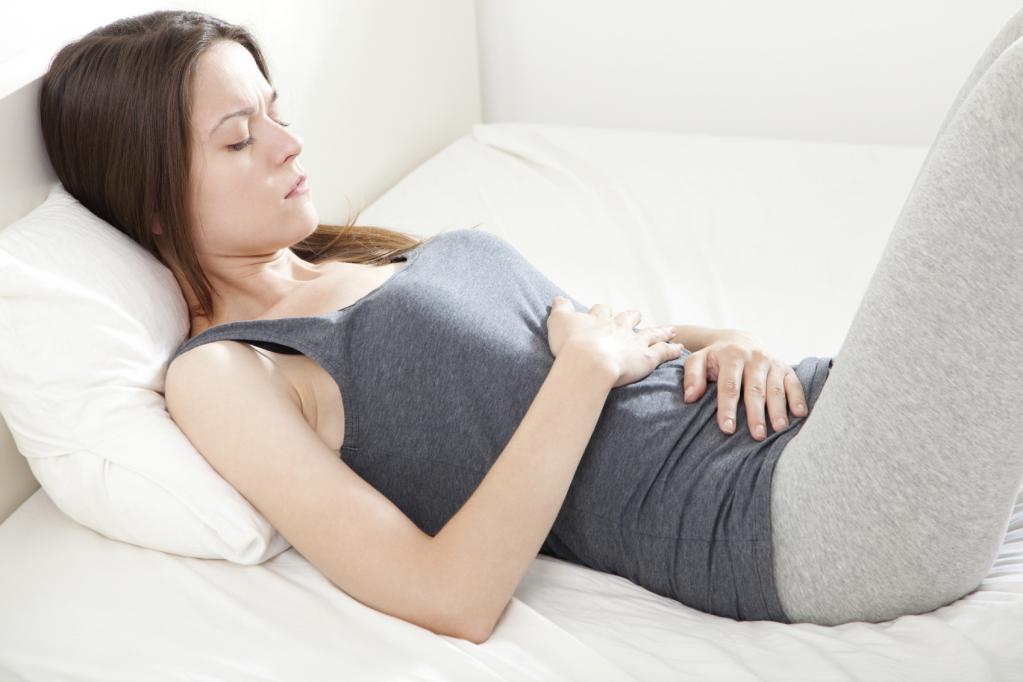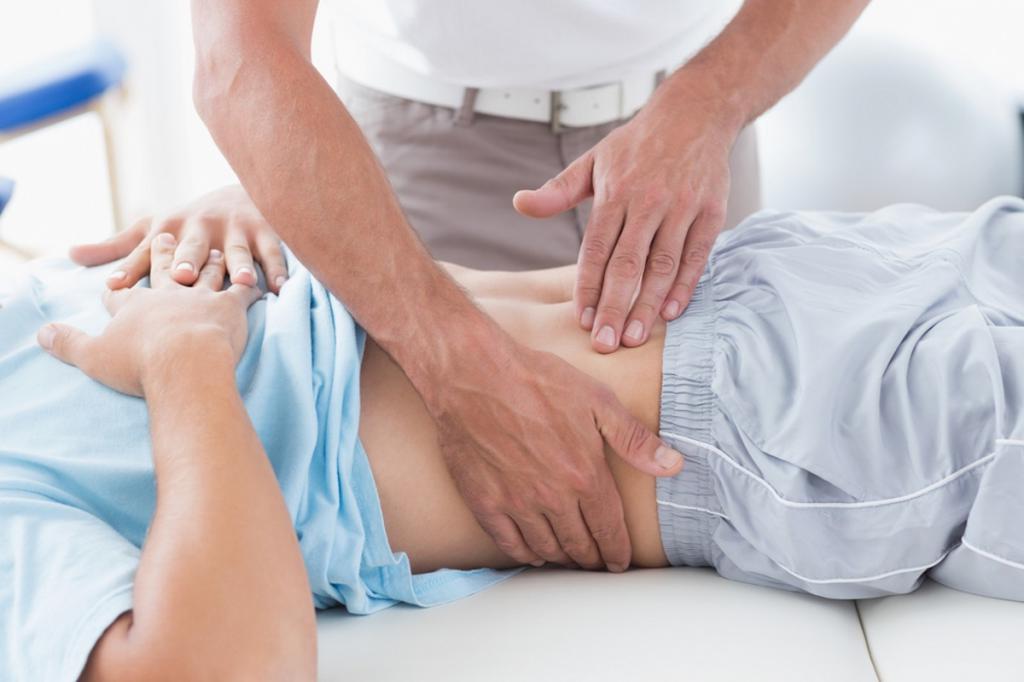In its normal state, the uterus is a mobile organ, which in its structure is similar to a pear. In a nulliparous woman, her size usually reaches 8 centimeters. As a rule, it can move in different directions without any difficulties. This movement is provided by the work of the abdominal muscles and ligaments that attach the uterus to the walls of the pelvis. In the normal state, the uterus is slightly inclined forward. Difficult mobility may indicate the presence of a pathological condition called uterine displacement. It can be both acquired during life and congenital.

Displacement is often a consequence of inflammatory processes. Women and women who are underweight and overweight are at risk. You will learn more about the consequences and causes of the uterus left or right from the article.
Causes
The main reasons, because of which there is a displacement of the uterus to the right or left, include:
- weakened pelvic muscles after childbirth;
- passive lifestyle;
- surgical operations;
- physical activity in the postpartum period;
- the presence of gynecological diseases;
- overweight;
- injuries sustained during childbirth;
- oncological tumors;
- hormonal disorders;
- damage to ligaments and muscles.
Symptoms
There are many symptoms that signal a changed location of the uterus. There are cases when this pathology is asymptomatic, and they are found only with complaints of a woman about infertility.

In general, cervical displacement is accompanied by such obvious symptoms:
- problem ovulation;
- increased soreness of the menstrual cycle;
- violation of the cycle;
- pain with intimacy;
- decreased libido;
- lack of orgasm;
- vaginal dryness;
- obstructed venous outflow;
- infertility;
- exacerbation of inflammation of the uterus and its appendages;
- often repeated spontaneous miscarriages and abortions;
- migraine;
- drawing pain in the lower abdomen.
Other symptoms may be added depending on the side on which the uterus has shifted. When the uterus deviates forward, pressure on the bladder is noted, as a result of which a woman may have trouble urinating. Frequent urges worry her, cystitis and urinary retention may appear. In almost every case, the symptoms have sufficient severity, making it possible to suspect the onset of the development of pathology in the uterus and seek medical help.
Diagnostics
Diagnostic measures are often performed in 3 stages. Moreover, to determine the exact diagnosis, you need to consult a gynecologist, urologist and proctologist. Often this pathological condition of the main reproductive organ is accompanied by other abnormalities that occur in the urinary system and intestines.
During a gynecological examination, the doctor palpates the abdomen and the uterus itself by entering fingers into the vagina. If the uterus leans back, the fingers will rest against the arch at the back. Deviation forward is felt over the bosom. With a deviation to the side, its insufficient mobility and gravity in a certain direction are revealed.

Hysterosalpingography and colposcopy are the next stages of the examination. Hysterosalpingography makes it possible to identify the level of patency of the tubes, assess the general condition of its cavity and make sure that there is no development of adhesions. For its implementation, a substance flowing through the tubes is introduced into the uterus. The whole process is controlled by x-ray and ultrasound. Colposcopy is used to determine the deviation of the uterus down. The procedure is carried out with a colposcope, and in this case there is no need to use an anesthetic drug. Thanks to this method, various neoplasms, the onset of cancer, dysplasia and pathologies of the cervix can also be additionally detected.
Traction methods
This group of methods for diagnosing uterine displacement includes various tests:
- smear on the microflora;
- which help detect atypical cells;
- ultrasound examination;
- general analysis of blood and urine.
An ultrasound scan is also shown, which will help determine the position of the uterus. Treatment of uterine displacement is carried out in 2 stages. Usually, there is an inflammatory process, as well as the formation of adhesions.
First stage of treatment
At this stage, the main task is to eliminate inflammation, restore blood supply to organs that do not eat well due to constricted blood vessels. For this, different methods are used. For therapy, anti-inflammatory drugs of non-steroidal origin are used:
- Diclofenac
- Nurofen
- Ibuprofen.

When an infection is attached, antibiotic use may be indicated in courses. Physiotherapeutic procedures: use for the treatment of UHF and other methods that contribute to the removal of inflammation, resorption of adhesions, improve lymphatic metabolism and blood supply, which significantly improves the general condition of the body.
The second stage and stabilization
Further, a final elimination of inflammation is required in order to proceed to the final stage of therapy. Anti-inflammatory treatment is performed by the same means that were used at the previous stage of therapy. It is important to completely cure the inflammatory process, because without this it is impossible to conduct gynecological massage - a key element in the treatment of uterine displacement.
Physiotherapy is designed to improve uterine circulation, to finally relieve inflammation with the help of safe anti-inflammatory drugs. Organ tissues will respond better to treatment, becoming more elastic. Subsequently, the adhesions will resolve, and the massage will stretch them.

Massage helps strengthen the fascia and ligaments of the pelvic organs. Also, the uterus will gradually move into a normal physiological position. Ligaments, strengthened by massage, will tightly fix the uterus in a physiological state.
The duration of the treatment will depend on the complexity of the displacement of the uterus. However, a massage should be performed at least 15 sessions lasting no more than 10 minutes. With the right approach and high-quality treatment, the displacement of the uterus can be eliminated, and the woman will be healthy!
Rehabilitation
As a rule, if the treatment was successful, the woman is discharged after 3 days. But the full recovery period is a month. However, a few more months there are restrictions on a number of loads. Depending on the operation and the accuracy of adherence to the doctor’s recommendations, an improvement can be observed already after a week, and if the operation was performed on a large area of the uterus - after 2 weeks. The recovery period occurs more quickly when a support mesh is installed. After the operation, the sick leave is valid for another month, it is very important for those women who lead a sedentary lifestyle, since it is dangerous to be in a sitting position after surgery for a long time.

During the rehabilitation period, the following restrictions apply: you can’t live an intimate life for 2 months until the seams completely dissolve. Six months can not lift weights. It is not allowed to enter the pool for 2 months. Also, within 2 months you can not engage in active physical activity. After surgery, painkillers are usually prescribed in the hospital to survive the first phase of recovery. This is usually quite enough, if inflammation has begun, antibiotics are also prescribed.
Additional measures
If the operation took place vaginally, it is also recommended during the rehabilitation period:
- Keep track of nutrition. It is important that the stool is liquid at first, you should not strain the lower abdomen when visiting the toilet.
- You can sit only 3-4 weeks after surgery.
- You can take a shower only after 5-7 days, and you will need to follow the instructions given by your doctor. You can not visit the sauna, bath, take a bath for 2 months.
- In case of bleeding, immediately call an ambulance.
- After the operation, inspection is carried out in a week, and then in a month.
The consequences of uterine displacement
The uterus, if displacement occurs, begins to put pressure on the rectum and bladder. It happens that the uterus moves to the left or to the right, usually it is caused by inflammatory processes in the ovaries or tubes. In this case, the organ shifts to the side where the inflammation proceeds. Displacement of the uterus to the side leads to the formation of adhesions, connective tissue, fixing organs, stretches, weakens. The organs are displaced, adhesions are formed between them. As a result, some organ mobility is lost. While visiting the toilet, a woman may experience pain or discomfort on the side where the adhesion occurred.

If the uterus moves down, falls, problems with the functioning of the bladder and intestines begin, as the uterus begins to put pressure on these organs. The ligaments are weakened, as a result of which the organs cannot be fixed in the desired position. Further weakening and sagging ligaments leads to urinary and fecal incontinence. In this case, surgical intervention is required. As a result of the displacement of the uterus in one direction or another, there may be such consequences:
- The development of cystitis, problems with urination.
- Constipation, lower back pain.
- Numbness of the extremities, the development of varicose veins, sciatic nerve neuralgia.
Offset Pregnancy
Uterine displacement (bending of the uterus) is a diagnosis that gynecologists establish almost every fifth woman. An insignificant displacement of this female organ is not a clinical pathology and is found in many women who have given birth and have not given birth. Experts consider only strong deviations from the established norm as a pathology, but it is quite rare. If the displacement of the uterus is not significant and the woman’s health is in order, then the onset of pregnancy is quite real. However, it must be taken into account that the stronger this deviation, the more difficult it will be for the sperm to enter the uterine cavity. Therefore, according to the advice of gynecologists, at conception, it is necessary to choose certain poses that will simplify the progress of the seed, for example, the knee-elbow. After intercourse, a woman needs to lie down a bit in the "birch" position. These methods increase the likelihood of a possible pregnancy.
With a critical displacement of the uterus, this pathology must be eliminated, which subsequently can lead to infertility. During the course of pregnancy, this disease can be expressed in the form of frequent urination, back pain. In most cases, at the beginning of the second trimester, the fetus begins to grow vigorously, the uterus grows in size and returns to its place in the pelvis of a woman. Only a back uterus can interfere with examination or ultrasound.